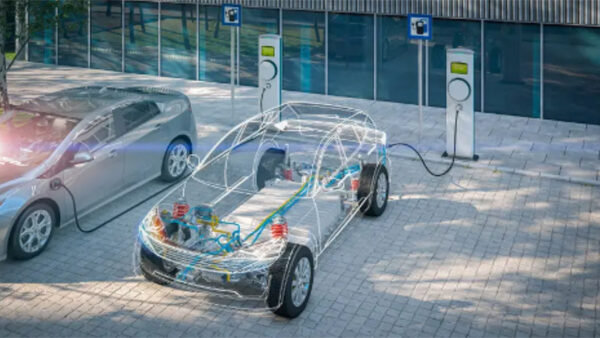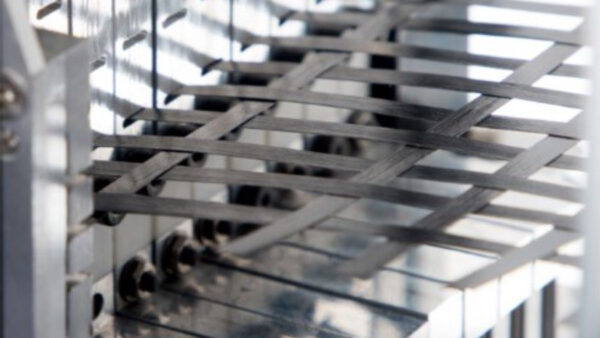Stronger, Faster, More Economical: How New Plastic Composites Can Advance Electric Vehicles

As we pivot toward a lower-carbon future, manufacturing will rely more and more on multiple modern materials to improve sustainability and resilience.
Automakers are leaning in, dramatically increasing new electric vehicle (EV) production to meet demand for sustainable propulsion. It’s estimated there will be more than 31 million EV’s sold annually by 2030. And they’re increasingly relying on plastics to drive down weight of auto components, a critically important need to enable electric vehicles.
To provide a desired driving range of 300-500 miles, EVs replace liquid fuel tanks with large battery packs that weigh as much as one-third of total vehicle weight. This requires engineers to look for mass savings throughout the vehicle, focusing on materials – like advanced plastics and composites – that can reduce weight while maintaining strength and integrity.
Benefits and Uses of Composite Materials in EVs
Plastic composite materials are typically composed of a plastic resin embedded with fibers made of glass or carbon. To increase resistance to abrasion, polyurethane coatings and super-tough polyamide (nylon) fibers can be added to the material. These combinations produce materials for vehicle parts that can be lighter than comparable steel or aluminum parts, as well as stronger and more durable.
Each composite material type offers auto designers varying benefits in terms of production cost, manufacturing efficiency, and/or weight saving. Composites also can help improve thermal management and save space near batteries, as well as increase impact resistance. And they can provide high-voltage insulation plus noise, vibration, and harshness (NVH) reductions across the vehicle structure.
Growing Use of Automotive Composites
Carbon-fiber composites, which typically are stronger and lighter compared to metal alternatives, have been used for several decades in low-volume industries such as the military, commercial aviation, and race cars. They help save weight, increase strength, and greatly improve occupant safety. Until recently, automakers have used these composites in fairly limited areas for high-volufme consumer vehicles. Examples include the BMW i3 chassis and General Motors’ Denali truck bed.
Many automakers are also taking advantage of new technologies across the composites spectrum to further offset the weight of EV batteries and electric motors. Current research is developing new manufacturing systems and materials that will continue rapidly evolving composite use in mass-produced vehicles.
Two Examples of New Composite Technologies
As one example, TRB Lightweight Structures has developed a highly automated press that reduces resin-curing time from hours to minutes, allowing robotic production with a cycle time of under 10 minutes. The company has developed a highly automated manufacturing center in Richmond, KY, in a joint venture with Toyota Tsusho America.
Another U.S. company, WEAV3d of Norcross, GA, has leveraged funding from the National Science Foundation and the U.S. Department of Energy to produce a woven thermoplastic lattice composite material designed to reduce production times as well as manufacturing costs. WEAV3D is using several plastic types – including polycarbonate, polypropylene, PET, and PPA – reinforced with carbon and glass fiber in a system it calls “Rebar for Plastics.”
The lattice-composite material is showing promise in applications such as interior trim, including molded polypropylene panels for dashboard and doors. Placing a lattice inside the molded-plastic parts eliminates the need for brackets and stiffeners usually required for support, the company CEO said. The company plans to produce its thermoplastic lattice-composite materials at the high volumes needed to support parts requirements for top-tier auto makers.

WEAV3D machine automatically weaves thermoplastic composite lattice structures at high volumes. Credit: WEAV3d, Inc.
As demand for lower carbon vehicles increases, demand for innovative, durable plastic composite materials also will increase, helping further reduce the weight of EV components.
For more information on the composites manufacturing technologies discussed above, please see these articles at SAE International and Composites World.
